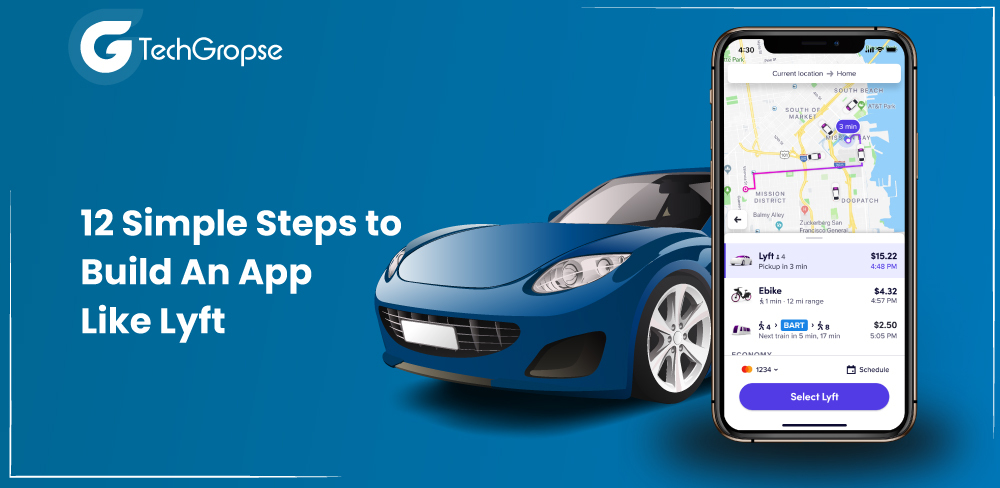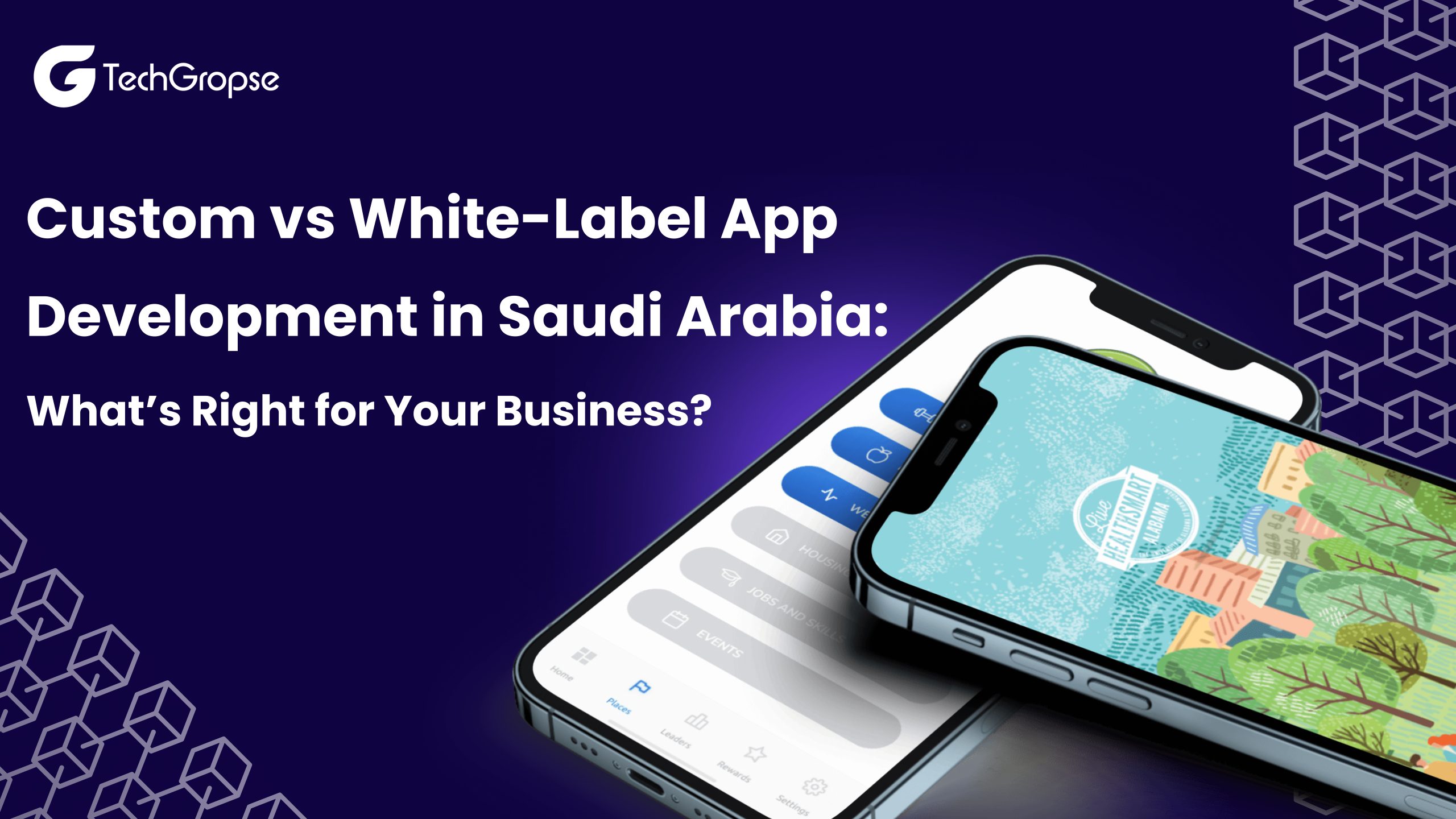As more and more people move to cities, we have to figure out how to get around without causing too much traffic and pollution and how to build an app like Lyft. Luckily, there is a new way to travel called ridesharing.
It means that instead of everyone driving their car, people can share a ride with others who are going the same way. It is more reasonable for everyone and helps the environment too.
Apps like Lyft, Grab, and Uber have revolutionized the way people commute and have made transportation more convenient than ever before.
If you are looking to build an app like Lyft, you have to have a clear understanding of the ride-sharing market, the technology stack needed, and the design and development process.
Lots of people are using ridesharing, and it is becoming a big business. It is expected to grow by almost 20% in the next few years and be worth over $200 billion.
Taxi booking app development company like Lyft and BlaBlaCar are already making lots of money from it.
In this article, we will guide you through the 12 simple steps to build an app like Lyft and help you create a successful ride-sharing app that meets the needs of your target audience.
So, if you are interested in starting your own business, ridesharing might be a great opportunity for you.
What is a Ride-Sharing App?
A ride-sharing app is a mobile application that connects passengers in need of transportation with drivers who are ready to provide rides using their personal vehicles. It allows individuals to request a ride from their current location to a desired destination through the app’s interface.
The mobile app development company develops amazing features like fare estimation, real-time GPS tracking, payment processing, driver profiles, and ratings/reviews. It allows users to easily book a ride, track the driver’s location, and make cashless payments.
Ride-sharing apps have gained popularity due to their convenience, affordability, and flexibility compared to traditional taxi services.
They have transformed the transportation industry by providing an alternative to owning a car, reducing traffic congestion, and contributing to a more sustainable mode of transportation. Some examples of famous ride-sharing apps such as Uber, Lyft, Didi Chuxing, and Grab.
The most common three types of ridesharing apps that are popular on the market are:
1. Peer-to-Peer Ridesharing
This type of ridesharing app connects separate drivers with passengers. Drivers use their own personal vehicles to deliver rides to passengers. The app works as a platform that facilitates the connection between passengers and drivers, handles payments, and tracks the ride. Examples of peer-to-peer ridesharing apps include
- Lyft
- Uber
2. Taxi Aggregator Apps
These apps work as a platform that aggregates and connects users with licensed taxi drivers in the area. They enable users to track their location, book a taxi, and make cashless payments. Unlike peer-to-peer ridesharing, the drivers in this model are professional taxi drivers who are already licensed and authorized to give transportation services. Examples of taxi aggregator apps include
- Curb
- Gett
3. Carpooling Apps
Carpooling apps focus on encouraging ridesharing among users who are traveling in the same direction or have similar routes. These apps connect drivers with available seats in their vehicles to passengers who are steering in the same direction. Carpooling apps aim to reduce traffic congestion and facilitate more efficient use of vehicles. Examples of carpooling apps include
- Waze Carpool
- BlaBlaCar
The Process to Build An App Like Lyft
Building an app like Lyft needs careful planning and execution. Here are 12 simple steps to guide you through the process:
- Define your app’s concept and features: Define the purpose and features of your app. Consider the primary functionalities such as payment processing, ride booking, driver tracking, and user profiles.
- Conduct market research: Analyze the market and potential competitors to determine opportunities and areas for advancement. Understand the target audience and their requirements.
- Create a detailed project plan: Outline the development stages, set milestones, and allocate resources. Consider essential aspects like design, development, testing, and deployment.
- Design the user interface (UI) and user experience (UX): Design wireframes and mockups to visualize the app’s layout, interaction, and navigation. To build taxi booking app you should focus on simplicity, consistency, and intuitiveness.
- Develop the backend infrastructure: Build the server-side components, including the APIs, database, and authentication systems. You should hire dedicated developers who choose a technology stack based on your needs like Ruby on Rails, Node.js, or Django.
- Implement real-time tracking: Integrate a mapping service like Google Maps or Mapbox to enable real-time location tracking for drivers and users.
- Develop the front end: Build the app’s user interface using technologies like HTML, CSS, and JavaScript. Consider using frameworks like React Native or Flutter for cross-platform compatibility.
- Implement ride booking functionality: Create app like Lyft where users can view available drivers select their pickup and drop-off locations, and choose a vehicle type.
- Implement payment processing: Integrate a secure payment gateway such as Stripe or Braintree to handle transactions. Ensure compliance with relevant regulations for handling sensitive user data.
- Build a driver management system: Develop a dashboard or app for drivers to manage ride requests, view earnings, and update their availability. Include features such as accepting or rejecting ride requests.
- Test and debug: Conduct thorough testing of your app to identify and fix any bugs or performance issues. Perform usability testing, functional testing, and compatibility testing across different devices and platforms.
- Deploy and launch the app: Publish your app on app stores like Google Play Store and Apple App Store. Develop a marketing strategy to promote your app and attract users. Track user feedback and continuously enhance the app based on user needs and market trends.
Remember that building a successful app needs ongoing support, updates, and enhancements based on user feedback and market demands.
It is essential to prioritize user satisfaction and deliver a reliable and enjoyable experience.
How Does the Lyft App Work?
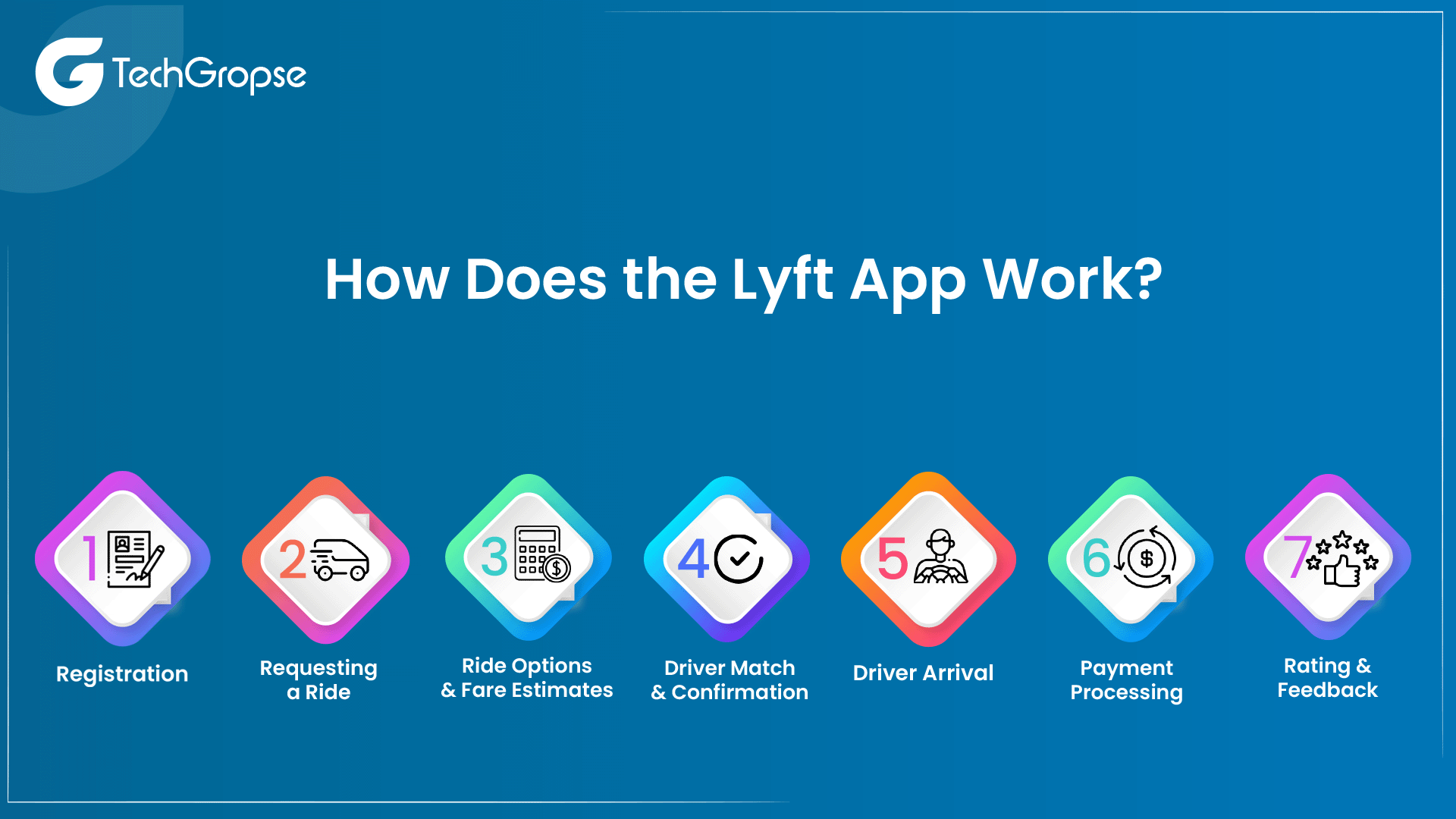
The Lyft app follows a specific workflow to connect passengers with drivers and facilitate the ridesharing process. Here’s a general overview of how the Lyft app works:
Registration and Profile Setup: Users download the Lyft app from the app store and make an account by providing their personal details, phone numbers, email addresses, and payment details. They may also need to agree to terms and conditions and set up their profile.
Requesting a Ride: After registration, users can open the app and enter their desired pickup and drop-off locations. The app uses GPS technology to determine the user’s current location and provide suggestions for pickup points. Users can also manually enter addresses or select locations from their saved favorites.
Ride Options and Fare Estimates: After entering the pickup and drop-off locations, the app shows available ride options like Lyft, Lyft XL (larger vehicles), Lux (luxury vehicles), or Shared (carpooling). Users can select their preferred ride type and view an estimated fare for the trip.
Driver Match and Confirmation: Once a ride request is submitted, the app’s algorithm matches the user with an available nearby driver. The user gets details about the assigned driver, such as their profile picture, name, vehicle details, and estimated arrival time. The user can review the details and confirm the ride.
Driver Arrival: The user can track the driver’s real-time location on the app’s map and receive notifications about the driver’s arrival. Once the driver comes, the user gets into the vehicle and the ride begins.
Payment Processing: At the end of the trip, the app automatically calculates the fare based on factors such as time, distance, and any applicable surge pricing. Users’ preferred payment method (credit/debit card or digital wallet) is charged automatically, eliminating the need for cash transactions.
Rating and Feedback: After the ride, both the user and the driver have the option to rate and provide feedback on their experience. This helps maintain accountability and improves the overall quality of the service.
Essential Features of Rideshare Apps to Make it Perfect
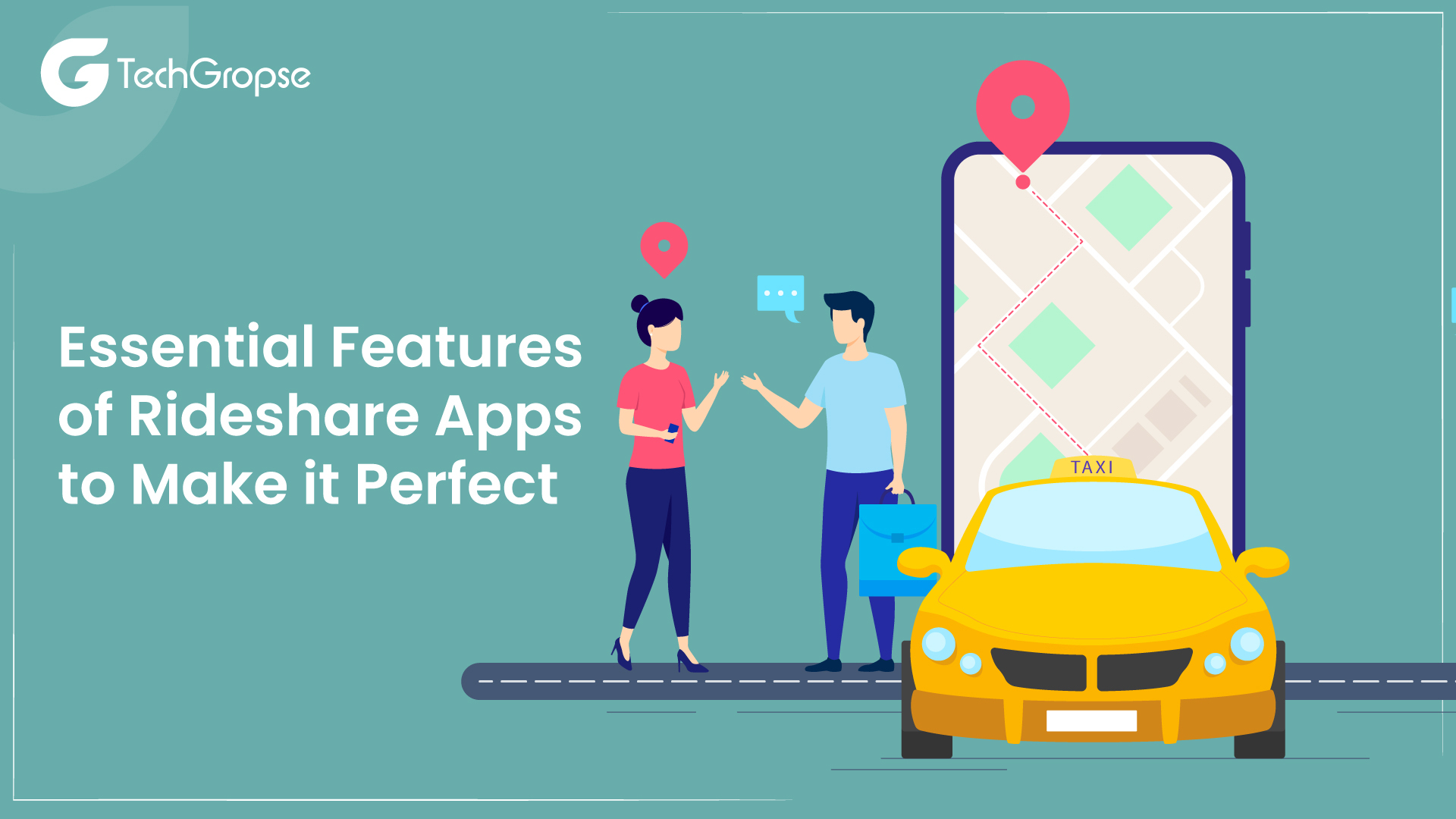
To build an app like Lyft, you have to consider a variety of features. Here is a complete list of features typically found in a ridesharing app:
#Users App
User Registration: Allow users to sign up and create accounts using their phone number, email, or social media accounts.
- Ride Booking: Allow users to book rides by specifying their pickup and drop-off locations. Provide options for selecting vehicle types and viewing fare estimates.
- Real-time Driver Tracking: Implement GPS-based tracking to show the real-time location of drivers on a map.
- Fare Calculation: Provide an algorithm to calculate fares based on factors such as distance, surge pricing, time, and vehicle type.
- In-app Payments: Integrate a secure payment gateway to process cashless payments from users’ credit/debit cards or digital wallets.
- Rating and Reviews: Enable users to rate and review drivers, and vice versa, to manage accountability and enhance the overall experience.
- Ride History and Receipts: Provide a ride history section where users can view past rides, and fare details, and download receipts.
- Notifications and Alerts: Send push notifications and in-app alerts to keep users informed about ride updates, driver arrivals, and important information.
- Social Sharing: Allow users to share their ride details or invite friends to use the app through social media platforms.
- Promo Codes and Discounts: Implement a system for users to enter promo codes and apply discounts to their rides.
- Support and Help Center: Offer a dedicated support section to handle user inquiries, provide FAQs, and facilitate customer support interactions.
- Multi-language and Localization: Support numerous languages and localize the app to cater to users in various regions.
#Driver App
- Driver Registration and Verification: Allow drivers to register on the app by providing their personal information, driver’s license, and vehicle details, and undergo verification processes.
- Availability and Status: Allow drivers to set their availability to accept ride requests and update their status as online, offline, or on a break.
- Accept/Reject Rides: Allow drivers to accept or reject ride requests based on their availability and preferences.
- Navigation and Routing: Integrate a mapping service to offer turn-by-turn navigation, optimized routes, and real-time traffic updates to drivers.
- In-app Messaging/Call: Facilitate communication between drivers and passengers through in-app messaging or call functionality to clarify pickup details or other instructions.
- Fare Details: Display fare details to drivers like the distance, estimated fare, and any applicable surcharges.
- Ride History: Provide a log of completed rides, including details such as distance, fare, ride duration, and passenger rating.
- Earnings and Payouts: Show drivers their earnings from completed rides and provide options for payout methods, such as direct deposit or digital wallets.
- Driver Incentives and Rewards: Implement a system to reward drivers for their performance like bonuses for completing a certain number of rides or maintaining high ratings.
- Performance Analytics: Provide drivers with insights and statistics on their performance, including ride completion rates, average ratings, and earnings.
- Notifications and Alerts: Send push notifications and in-app alerts to keep drivers informed about new ride requests, passenger updates, or important announcements.
- Driver Referral Program: Offer incentives for drivers to refer new drivers to join the platform.
- Safety Features: Implement safety measures like driver background checks, SOS buttons, and options to share ride details with trusted contacts.
- Driver Availability and Acceptance: Allow drivers to set their availability and accept or reject ride requests.
#Admin App
- Dashboard: Provide an overview of key metrics, including the number of registered users, completed rides, active drivers, and earnings.
- User Management: Enable administrators to manage user accounts, review and approve driver registrations, and handle user-related issues.
- Driver Management: Allow administrators to manage driver accounts, handle driver verifications, review driver information, and resolve driver-related concerns.
- Ride Management: Provide tools to monitor and manage ride requests, track ongoing rides, and handle ride-related disputes or issues.
- Fare Management: Allow administrators to set and adjust fare structures, manage surge pricing, and handle fare-related inquiries or complaints.
- Analytics and Reporting: Generate reports and insights on app usage, user engagement, driver performance, and financial data to evaluate the platform’s performance.
- Support and Help Desk: Provide a support ticket system to address user inquiries, driver concerns, and other platform-related issues.
- Payment Management: Handle payment transactions, monitor payouts to drivers, and ensure the smooth functioning of the payment system.
- Geolocation and Mapping: Monitor and analyze user and driver locations, view real-time maps and track ride activity for enhanced operations and decision-making.
- Marketing and Promotions: Provide tools to create and manage promotional campaigns, referral programs, and discounts to attract and retain users and drivers.
- Fraud Detection and Prevention: Implement measures to identify and prevent fraudulent activities, such as fake accounts, false rides, or suspicious behavior.
- Admin Access and Permissions: Set user roles and permissions within the admin panel to restrict access to sensitive data and features based on user roles.
Advanced Business Model of an App Like Lyft
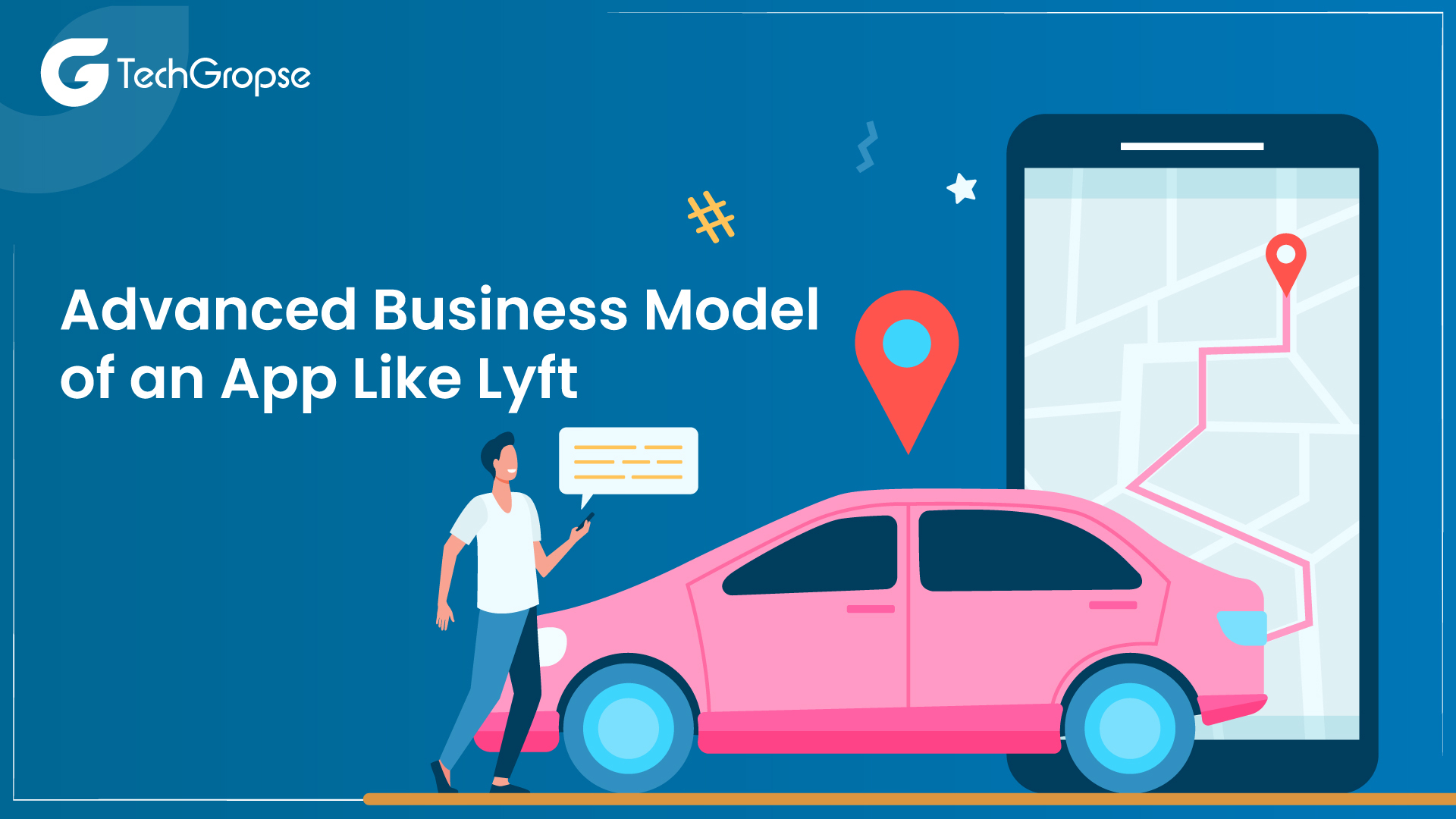
If you want to build an app like Lyft you must have knowledge of Lyft business model. It is known as a peer-to-peer ridesharing platform. Here’s an overview of Lyft’s business model:
1. Ride Booking
Passengers can request rides through the Lyft app by specifying their pickup and drop-off locations. The app uses advanced GPS technology to match the passenger with an available nearby driver.
2. Driver Network
Lyft recruits and verifies drivers who fulfill specific needs like having a registered vehicle, a valid driver’s license, and passing background checks. Drivers are independent contractors who use their own personal vehicles to offer rides.
3. Dynamic Pricing
Lyft implements a dynamic pricing model, commonly known as surge pricing or Prime Time, which adjusts the fares based on supply and demand. During periods of high demand, the fares can increase to incentivize more drivers to be available.
4. Payment Processing
Lyft manages the payment processing for rides through the app. Passengers’ payment information is securely stored, and payments are automatically deducted at the end of each ride. Passengers can make cashless payments using their debit/credit cards or e-wallets.
5. Safety Measures
Lyft implements safety measures to save both passengers and drivers. These measures include vehicle inspections, driver background checks, in-app emergency assistance, and insurance coverage for rides.
6. Partnerships
Lyft forms partnerships with different organizations like businesses, event venues, and transportation agencies, to provide customized transportation solutions and provide advantages to its customers or members.
7. Additional Services
In addition to standard ridesharing services, Lyft has expanded its offerings to include other transportation options like shared luxury rides (Lyft Lux), rides (Lyft Line), and accessibility services (Lyft Access).
How to Measure Lyft App Development Cost
The cost to build an app like Lyft can differ depending on various aspects, including the complexity of the app, the number of platforms (iOS, Android) you want to target, the location and expertise of the development team, and the specific features and functionalities you want to incorporate.
It is important to note that mobile app developers can help to estimate the cost to build an a[[ like Lyft.
For a basic version of a ridesharing app like Lyft, the development cost can range from $40,000 to $60,000.
This estimate typically covers essential features like ride booking, user registration, payment processing, real-time tracking, ratings and reviews, and a basic admin panel.
It is important to allocate a budget for ongoing maintenance, updates, and server costs as well. Additionally, quality assurance, expenses for design, project management, and other related services should be considered.
It is advisable to consult with development agencies or hire dedicated developers to get more accurate cost estimates based on your specific needs.
Final Thought
If you plan to Build an app like Lyft needs a combination of market knowledge, technical expertise, and design skills.
By following these 12 simple steps, you can create a successful ride-sharing app that meets the needs of your target audience.
Remember to stay up to date with market trends, continuously enhance and update your app, and provide an excellent user experience to ensure your app’s success.
With dedication and hard work, you can create an app that revolutionizes the ride-sharing industry and makes a positive impact on people’s lives.
FAQ: 12 Simple Steps to Build An App Like Lyft
1. How much does it cost to build an app like Lyft?
The cost of building an app like Lyft depends on various factors like the complexity of the app, the technology stack used, the development team’s location, and the timeline of the project. On average, building a ride-sharing app like Lyft can cost anywhere between $100,000 to $500,000.
2. Do I need to have a background in programming to build an app like Lyft?
While having a programming background can be an advantage, it is not necessary to build an app like Lyft. You can hire a Lyft app developer who can handle the technical aspects of the project, while you focus on the business and marketing aspects of the app.
3. How do I ensure the safety and security of my ride-sharing app users?
To ensure the safety and security of your ride-sharing app users, you must implement security measures like data encryption, two-factor authentication, secure authentication and authorization, and regular security audits.






